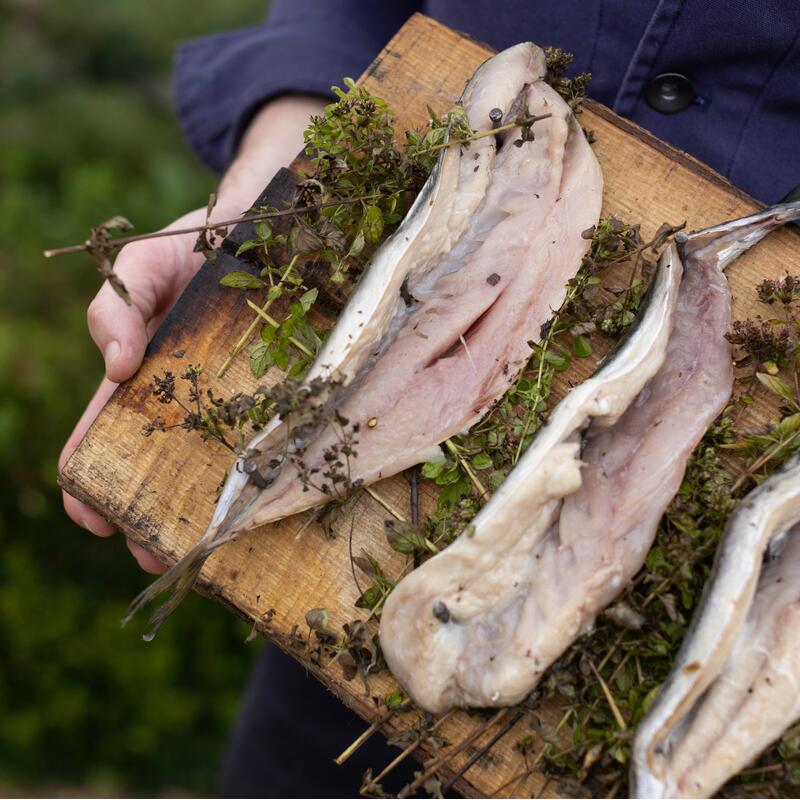By Megan Murray
Summer dining can take many forms. Long lunches on garden tables, picnics in the grass, or gathered around a barbecue with a glass of wine in hand.
While all of these scenes are appealing, we can't help but have a soft spot for a good old-fashioned barbecue. Easy to pull off and always delicious, it's a warm-weather staple. And, with summer approaching, now's the time to brush up your skills on the grill.
Barbecuing may be loved the world over, but everyone has their own style. Here, three Soho House chefs share their tips - from Little Beach House Barcelona's Antonio Parisi to Babington House's Neil Smith.


‘Haven’t considered a coffee rub? You need to’
Tamas Prikkel, head chef at Hoxton Grill, says that an unusual ingredient is the key to making his favourite rub when barbecuing meat.
'This coffee rub adds a really rich flavour to the meat and transforms it from good to epic. I advise brining the meat one day before cooking in a simple mix of water, sugar, salt, spices, and herbs. This will help prevent moisture loss during grilling and keep it juicy with a good base flavour.
'Rub the meat at least two hours prior, so that it has time to absorb the flavour. And, ideally, it would take another two hours of grilling for it to become succulent and soft.'
To make the rub, simply mix together the following ingredients:
200g Nescafe granules
125g brown sugar
60g caster sugar
450g Maldon salt
25g garlic powder
10g ground cumin
75g smoked paprika
125g coarse black pepper
10g ground ginger


‘When barbecuing fish, use a plank technique to infuse with lemon and herbs’
Neil Smith, Babington House's general manager, advises using oilier fish like salmon, mackerel and sardines on the barbecue - but there's more than one way to cook it.
'If you're grilling fish straight on the barbecue, always wait for the coals to become white hot and flameless - this means they've reached the right temperature and you can cook skin down on the grill. If you try barbecuing on a flame, your fish will turn black and taste like soot, which isn't what anyone wants. If the skin burns, just peel it off, and finish with a squeeze of lemon and some olive oil.
'Personally, my favourite way to cook fish is on a plank of wood. Soak a lovely piece of oak in water for 48 hours. Then, lay lots of herbs and lemon slices across it, followed by your fish. Hammer the fish to the plank to trap all of the herbs. Place it on the coals and let it cook the fish slowly until ready. You'll find that the oak gives the flesh a wonderful flavour.
'Finish with a simple gremolata dressing made from lemon zest, chopped parsley, garlic, and olive oil.'


‘Try a Spanish take on grilled octopus’
Antonio Parisi, head chef at Little Beach House Barcelona, says that grilling is a huge part of Spain's food culture, particularly along the south coast.
'At Little Beach House, one of our most popular and authentic dishes is grilled octopus with green peas and aioli. You can try this yourself at home by boiling it in water for 30 minutes, then leaving to rest in the same water for another 30 minutes.
'Pop it in the fridge until fully cold, season with salt and pepper, then cover generously with aioli. Grill over a low barbecue until it's crispy on the outside and tender on the inside.
'I'd also advise trying a simple side dish of charred aubergine, peppers and onions on a high-heat barbecue. Peel off the skins afterwards and serve with salt, pepper, mint and, of course, a good glug of Spanish olive oil.'


‘Use different areas of the barbecue to get a crispy crust’
Keith Holland, barbecue chef at Soho Farmhouse, says dividing your grill into sections is the best way to achieve a perfect finish on your meat.
'Getting a good crust on your meat, or crispy skin on chicken or fish, is about how you control the fire, coals, and your grill. My first tip is don't rush; nurse your coals until you're able to divide them into sections.
One area should be white hot and built up high and close to the grill, keep another section medium-hot, and have a cooler area, too, which will be lower.
'The hottest section is great for the initial sear of meat, a quick cook of sardines or mackerel, or charring aubergines for baba ghanoush. The cooler area creates some distance between the coals and protein, which helps the crust to caramelise. Make sure you're constantly basting to stop your meat drying out.'





